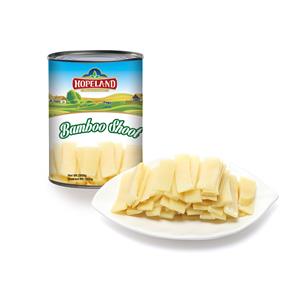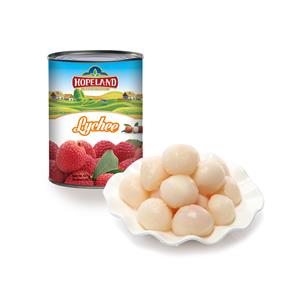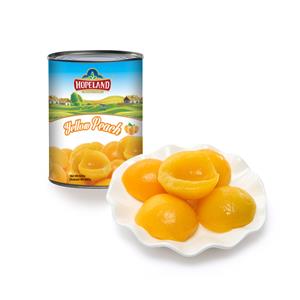Canned Bean Sprouts: A Crunchy Convenience with Deep Culinary Roots
Bean sprouts may look delicate, but they carry an impressive history, a unique culinary versatility, and a surprising modern relevance in the world of packaged foods. When most people think of sprouts, they typically imagine the fresh, crisp white strands piled onto a bowl of pho or tossed into an Asian stir-fry. Yet tucked quietly on supermarket shelves around the world is another version: canned bean sprouts—a practical, long-lasting ingredient that serves as a bridge between traditional Asian gastronomy and contemporary global convenience.
While canned bean sprouts are sometimes overlooked in comparison to more glamorous canned goods like peaches, pineapples, or tuna, they offer a fascinating story worth telling. From their origins in ancient Asian agriculture to their mass-market production today, these humble canned vegetables offer a blend of cultural heritage and practical utility. This article explores what canned bean sprouts are, how they came to be, their nutritional profile, how they are produced, and the many ways they can enhance everyday cooking.
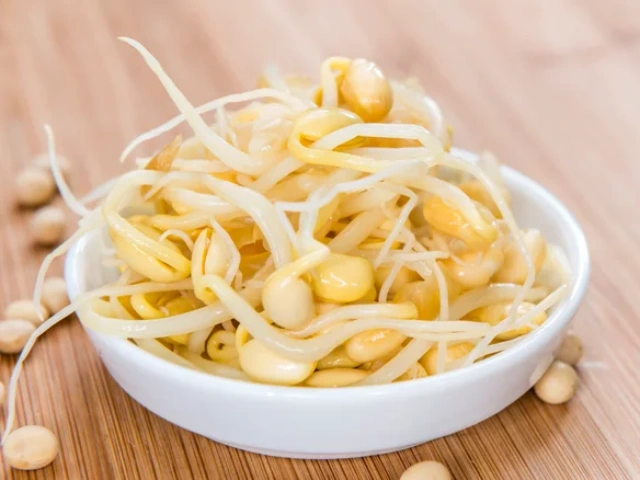
1. What Exactly Are Bean Sprouts?
Bean sprouts are the young shoots of legumes—most commonly mung beans or soybeans—that have just begun to germinate. The sprouting process typically lasts only a few days, during which the beans absorb water, swell, crack open, and extend a slender white root and stem. Mung bean sprouts, in particular, are known for their tender texture, snappy crunch, and slightly nutty, subtly sweet flavor.
These sprouts are a staple of East and Southeast Asian cooking. They appear in dishes such as:
Chinese chow mein and stir-fried bean sprouts
Japanese moyashi salads
Korean sukju namul
Thai pad thai
Vietnamese pho toppings
Their crisp bite offers a refreshing contrast to noodles, meat, and broth, adding both texture and nutrition.
Canned bean sprouts, though processed and softened, retain many of these culinary advantages—especially for people looking for convenient, ready-to-use vegetables with a long shelf life.
2. Why Can Bean Sprouts? A Practical Evolution
Fresh bean sprouts are famously fragile. They wilt quickly, spoil easily, and require careful storage. In many countries outside Asia, accessing fresh sprouts can be challenging because of their extremely short shelf life.
Canning emerged as a solution.
2.1. Convenience and Shelf Life
Once sealed inside a sterilized container, canned bean sprouts can last 1–3 years, depending on packaging and storage. This makes them an ideal pantry staple for households and food manufacturers alike.
2.2. Global Availability
As Asian cuisine has spread globally, so has the demand for its key ingredients. Canned bean sprouts help bridge the accessibility gap, ensuring that even in remote or non-urban areas, cooks can enjoy a taste of Asian flavors without needing to source fresh sprouts.
2.3. Food Safety
Fresh sprouts, if not properly washed or handled, can harbor bacteria. Canning eliminates this risk—high-temperature processing ensures that the product is safe, sterile, and ready to eat.
3. A Brief History of Sprouts—From Ancient Asia to Modern Canning
Sprouting beans is a tradition dating back thousands of years.
3.1. Ancient China
Historical records show that mung beans were sprouted and consumed as early as the Han Dynasty (206 BCE–220 CE). They were valued for their cooling energy in Traditional Chinese Medicine and appreciated for their crisp texture in cooking. Sprouts were seen as both food and medicine, especially during summer heat.
3.2. Japan and Korea
Japan adopted mung bean sprouts (moyashi) in Buddhist temple cuisine, while Korea incorporated them into classic dishes such as bibimbap and side dishes like namul.
3.3. Arrival in the West
Sprouts reached Western kitchens in the 20th century as Asian immigration grew. Restaurants serving Cantonese, Japanese, Thai, and Vietnamese food helped popularize bean sprouts beyond their original cultural borders.
3.4. The Canning Era
By the mid-1900s, as global trade in canned goods expanded, bean sprouts became one of the vegetables selected for preservation. Though they remain less famous than canned bamboo shoots or water chestnuts, they have quietly maintained a niche among consumers who value convenience and versatility.
4. How Canned Bean Sprouts Are Made
The production of canned bean sprouts is a carefully controlled process, designed to preserve as much texture and flavor as possible.
4.1. Step 1: Sprouting
Producers begin by soaking mung beans to trigger germination. The beans are then kept in warm, humid conditions, rinsed regularly, and allowed to sprout for 3–5 days.
4.2. Step 2: Harvest and Sorting
Once the sprouts grow to the desired length—typically 5–7 cm—they are harvested, washed thoroughly, and sorted to remove husks and imperfect pieces.
4.3. Step 3: Blanching
Before canning, sprouts are blanched in hot water. This step:
softens the sprouts slightly
preserves color
reduces microbial load
improves texture stability
4.4. Step 4: Filling and Brining
Sprouts are packed into cans, jars, or pouches, then filled with a mild brine. The brine may include:
water
salt
citric acid (for freshness and texture)
4.5. Step 5: Sealing and Sterilization
The containers are sealed and then heated under pressure, often at 121°C, to destroy all microorganisms. This ensures a long shelf life and food safety.
5. Nutritional Value of Canned Bean Sprouts
Fresh bean sprouts are known for their low calories and high nutrient density. Canned versions retain many of these benefits, though blanching and heating reduce some heat-sensitive vitamins.
Here’s what you can generally expect per 100 grams of canned mung bean sprouts:
Calories: 10–25 kcal
Fat: 0 g
Carbohydrates: 2–5 g
Fiber: 1–2 g
Protein: 1–2 g
Vitamin C: reduced during canning
Iron & Potassium: retained in moderate amounts
They are:
low in calories
low in fat
gluten-free
cholesterol-free
rich in water content (great for hydration)
For individuals seeking light, healthy ingredients that add bulk and texture without heaviness, canned bean sprouts are an excellent option.
6. How to Use Canned Bean Sprouts in Cooking
One of the biggest strengths of canned bean sprouts is their versatility in both Asian and Western dishes.
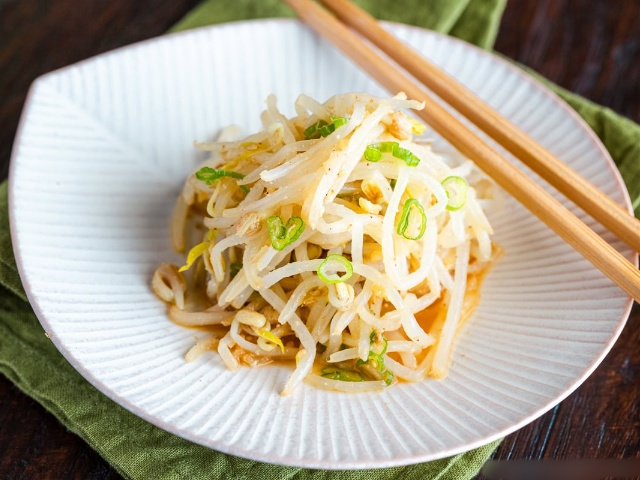
6.1. Quick Asian Stir-Fries
Add canned bean sprouts at the final stage of cooking for gentle warming and texture. They go well with:
chicken or beef stir-fries
garlic chive dishes
tofu and vegetable medleys
fried rice or fried noodles
6.2. Soups and Broths
While fresh sprouts add crunch, canned sprouts contribute mild sweetness and body to broths such as:
chicken noodle soup
miso soup
ramen
Thai clear soups
6.3. Spring Rolls and Wraps
Drain sprouts well, then mix them into fillings for:
Vietnamese summer rolls
Chinese fried spring rolls
lettuce wraps
6.4. Salads
Canned sprouts can be tossed into:
cabbage slaws
noodle salads
cold sesame noodles
bean-based salads for extra crunch
6.5. Western Fusion Dishes
Use them as a low-calorie replacement for other vegetables in:
omelets
casseroles
pasta primavera
savory pancakes
6.6. Sandwiches and Burgers
They add fresh bite and moisture to:
veggie burgers
chicken sandwiches
cold cut rolls
Even though canned sprouts are softer than fresh ones, they still offer pleasant texture and mild flavor that enhances many dishes.
7. How to Properly Store and Handle Canned Bean Sprouts
7.1. Unopened Cans
Unopened canned bean sprouts should be:
stored in a cool, dry place
kept away from sunlight
used within best-by dates
A typical shelf life ranges from 24–36 months.
7.2. After Opening
Once the can is opened:
transfer unused sprouts to a clean, airtight container
add fresh water to keep them hydrated
refrigerate
use within 2–3 days
Never store opened canned food in the metal can itself—doing so can cause metallic flavors and faster spoilage.
7.3. Signs of Spoilage
Whether unopened or opened, discard the product if you notice:
swollen or bulging cans
rust or leaking
foul odors
unusual colors
slimy textures (after opening)
Food safety should always come first.
8. Advantages of Using Canned Bean Sprouts
8.1. Long Shelf Life
Unlike fresh sprouts that last only 2–3 days, canned ones last for years.
8.2. Ready to Use
No sprouting, washing, or trimming required. Just open, drain, and cook.
8.3. Cost-Effective
Canned sprouts are affordable and help minimize food waste.
8.4. Ideal for Large-Scale Kitchens
Restaurants, cafeterias, and food manufacturers appreciate the consistency and safety of canned sprouts.
8.5. Accessible Worldwide
Even regions that cannot grow mung beans or supply fresh sprouts can enjoy them through canned formats.
9. Limitations and Considerations
While canned bean sprouts offer many benefits, they aren’t identical to fresh ones.
9.1. Texture Differences
Fresh sprouts are crisp and juicy; canned ones are softer due to blanching and sterilization.
9.2. Reduced Vitamin C
The canning process significantly decreases heat-sensitive vitamins.
9.3. Low Sodium Considerations
Some canned versions contain salt. Look for “low-sodium” labels if needed.
9.4. Suitability for Certain Dishes
For dishes that rely heavily on raw crunch—such as topping pho—fresh sprouts are preferred. Canned sprouts, however, work beautifully in cooked dishes.
10. The Future of Canned Bean Sprouts
As global consumers continue seeking convenient, healthy, plant-based foods, canned bean sprouts are positioned to grow in popularity.
Industry trends include:
sodium-free versions
organic certifications
retort pouches instead of traditional cans
sustainably sourced mung beans
ready-to-eat meal kits incorporating sprouts
With rising interest in Asian flavors and fusion cooking, canned bean sprouts are likely to see renewed attention, especially among younger consumers who value convenience without sacrificing nutrition.
Conclusion: A Small Ingredient with Big Potential
Canned bean sprouts may not be as glamorous as exotic fruits or gourmet sauces, but they occupy a unique niche in global food culture. They combine the ancient tradition of sprouting with the modern convenience of canning, allowing people everywhere to enjoy the light, crunchy essence of sprouts at any time of year.
From a practical standpoint, they are affordable, versatile, long-lasting, and easy to incorporate into countless recipes. From a cultural perspective, they reflect how traditional Asian ingredients have adapted to international markets and modern lifestyles.
Whether you’re preparing a quick weeknight stir-fry, stocking your pantry for emergencies, or experimenting with Asian fusion dishes, canned bean sprouts offer a dependable and flavorful way to bring freshness—ironically preserved—into everyday meals.


